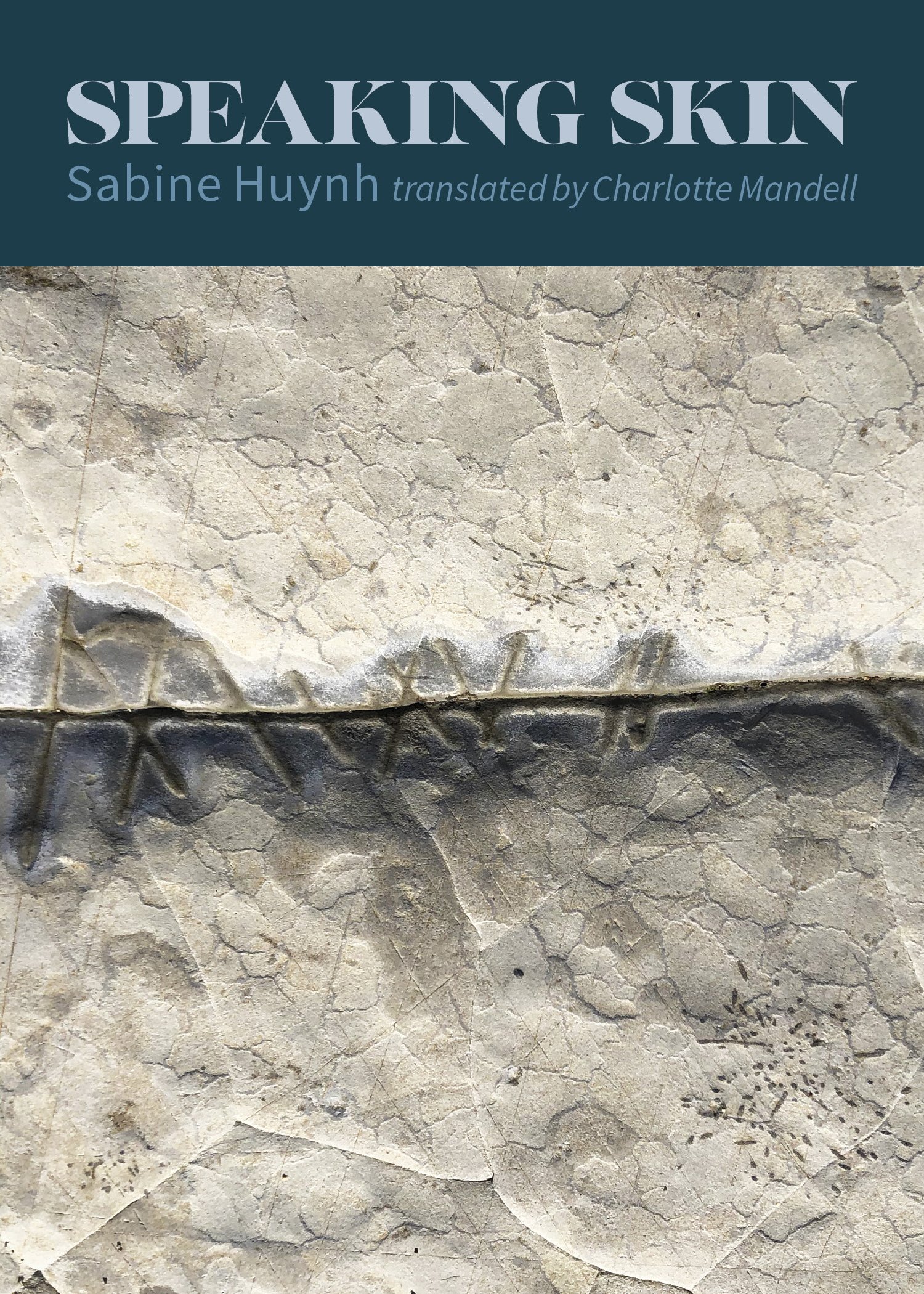 Image 1 of 2
Image 1 of 2

 Image 2 of 2
Image 2 of 2



Speaking Skin by Sabine Huynh translated by Charlotte Mandell
The dense texts in Speaking Skin—small squares, like beds, or jewel caskets—explore the intimacy of language: the book begins with the narrator having lost her voice, her language, as well as her connection to her own body; gradually she rediscovers language through touch, through physical connection with the other, who speaks a different language; the two languages/tongues intermingle and form an entirely new tongue of intimacy and awareness. “There are doors under the skin” which language opens: new words are born, language and thought become one, skin learns finally to speak. Speaking Skin was published by Æncrages & Co in 2019 along with paintings by Philippe Agostini. — CHARLOTTE MANDELL, translator of Speaking Skin.
The dense texts in Speaking Skin—small squares, like beds, or jewel caskets—explore the intimacy of language: the book begins with the narrator having lost her voice, her language, as well as her connection to her own body; gradually she rediscovers language through touch, through physical connection with the other, who speaks a different language; the two languages/tongues intermingle and form an entirely new tongue of intimacy and awareness. “There are doors under the skin” which language opens: new words are born, language and thought become one, skin learns finally to speak. Speaking Skin was published by Æncrages & Co in 2019 along with paintings by Philippe Agostini. — CHARLOTTE MANDELL, translator of Speaking Skin.
The dense texts in Speaking Skin—small squares, like beds, or jewel caskets—explore the intimacy of language: the book begins with the narrator having lost her voice, her language, as well as her connection to her own body; gradually she rediscovers language through touch, through physical connection with the other, who speaks a different language; the two languages/tongues intermingle and form an entirely new tongue of intimacy and awareness. “There are doors under the skin” which language opens: new words are born, language and thought become one, skin learns finally to speak. Speaking Skin was published by Æncrages & Co in 2019 along with paintings by Philippe Agostini. — CHARLOTTE MANDELL, translator of Speaking Skin.
About the Author:
Sabine Huynh is a Saigon-born French poet, novelist, essayist and literary translator who has lived in many different countries, including France, where she grew up. She has published a dozen books. Her poetry collection Kvar lo won France’s 2017 CoPo Poetry Prize, and her novel Elvis à la radio won the 2023 Jean-Jacques Rousseau Prize for Autobiography and the 2023 Prize for Exile Literature. She has translated over twenty-five books, mostly poetry collections, including works by Gwendolyn Brooks, Laynie Browne, Carla Harryman, Rodger Kamenetz, Ilya Kaminsky, Ada Limón, Uri Orlev, Alice Oswald, Diane Seuss, and Anne Sexton. She won the 2022 Alain Bosquet Poetry Prize for her translation of Kaminsky’s Deaf Republic. Three of her books have been translated into English by Amy Hollowell: Pen Mark on Soft Paper: A Letter to the Poet Allen Ginsberg, Into the Turning: Emptyfull Poetry, and Setting Sail: 60 Sonnets for the Boat People. Her poetry collection Herbyers was a finalist for the 2024 Guillaume-Apollinaire award, the oldest and most prestigious French poetry prize.
About the Translator:
Charlotte Mandell has translated over fifty books, including work by Mathias Énard, Jonathan Littell, and Paul B. Preciado. Her translation of War by Louis-Ferdinand Céline just came out from New Directions. Her translation of In the Shadow of Girls in Blossom by Marcel Proust is forthcoming from Oxford World’s Classics 2025, and her translation of Paul Valéry’s Monsieur Teste came out from NYRB Classics in December 2024. She received the Thornton Wilder Translation Prize from the Academy of Arts and Letters, and she was recently given the honor of Chevalier dans l’Ordre des Arts et des Lettres by the French government.
